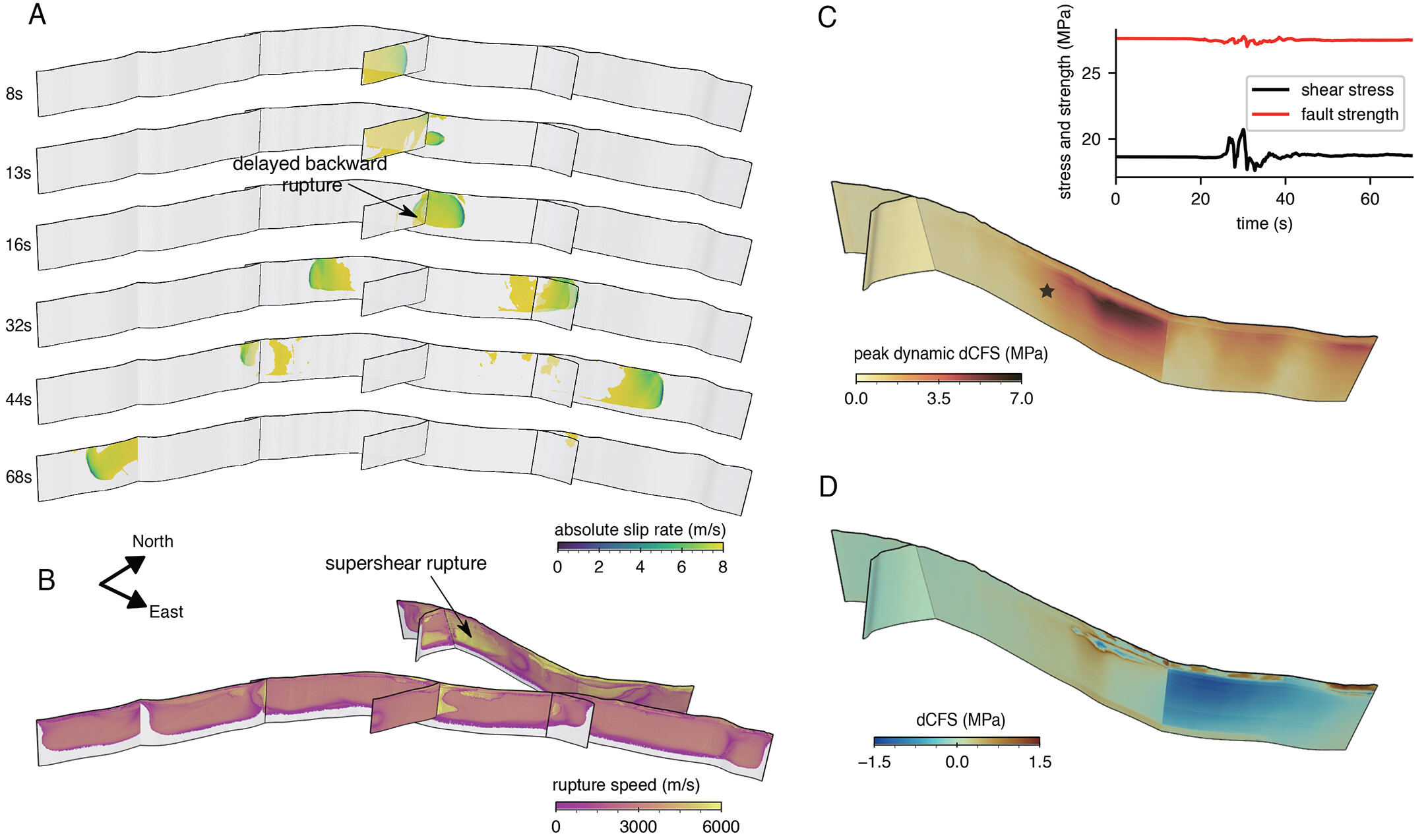The SeisSol group at LMU, Munich, and Scripps Institute, San Diego, reports about “The complex dynamics of the 2023 Kahramanmaraş, Turkey, Mw 7.8-7.7 earthquake doublet” in a research article in Science.
See also the following press release by Scripps:
On 6th of February 2023, a Mw 7.8 earthquake broke more than 300 km of the East Anatolian Fault, Turkey. Nine hours later, a second earthquake of Mw 7.7 unzipped 150 km of the Sürgü-Cardak-Savrun fault system, 60 km north of the first event’s epicenter. This pair of major earthquakes, which ended up as one of the deadliest disasters in the region in historic times, was unusual for several reasons. First, unlike mainshock-aftershock sequence, the 9 hours apart earthquakes were almost of the same size (therefore called a “doublet”) which compounded the damage. Secondly, the size of the two events was larger than expected and much bigger than any known past earthquakes on the same faults. This happened because of an unlikely “cascade” that broke through various fault bends and step-overs that normally would act as barriers stopping the rupture propagation. Finally, this earthquake sequence challenges several paradigms in earthquake dynamics. The first event displayed a backward rupture branching, a branching mechanism that is so highly unfavorable from a dynamic perspective that it is commonly neglected in hazard studies; and the second event hosted an unilateral supershear rupture which was not expected to occur on an immature and geometrically complex fault as the Sürgü-Cardak-Savrun fault system.
In this Science study, LMU and Scripps researchers provide a holistic synthesis of diverse and rich data sets and state-of-the-art earthquake interpretation tools to unravel and explain the complex earthquake doublet. In particular, the study presents data-informed dynamic rupture simulations performed with SeisSol that provide independent validation of the data-driven kinematic models and physic-based explanations of the puzzling features of the earthquake doublet. They find both earthquakes branched and jumped in unexpected ways, in which stress interactions, and static and dynamic triggering worked together across a complex fault system, resulting in a cascade of rupture with a larger than usual total rupture length and greater destruction potential than conventional fault segmentation model would have predicted. The unusually complex dynamics during and between the events of the Kahramanmaraş earthquake call for reassessment of common assumptions built into seismic hazard assessments.
Further Information:
